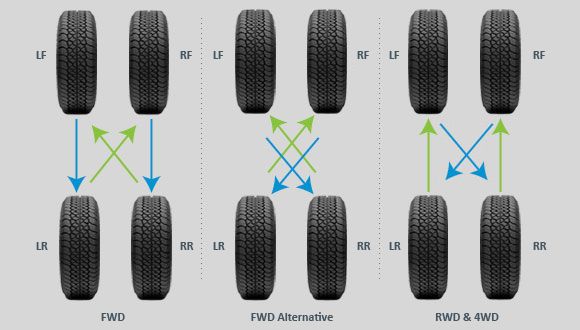The wintertime can be a great time to hit the road to see friends and family, get any last-minute shopping done, or simply enjoy the sights and sounds of the season. But just as you would bundle yourself up when heading out in the winter weather, it’s essential to prepare your vehicle for the rain, frost, ice, or snow of the months ahead. For drivers in areas such as the midwest or northeast especially, performing the extra steps needed to winterize your vehicle ensures your car, truck or SUV can handle any severe winter weather.
One such task that many drivers may not consider but can help you stay safe in even the harshest winter conditions is rotating their winter tires.
Get A Free Quote
The condition of your tire tread determines how well your car grips the road surface. When you’re driving in wet or icy conditions (both more common in winter months) and the surface is slick, your car’s tires need the most traction they can get to help make sure you can change your speed, brake, and stop quickly.
Your tire’s tread is so vital that all tires are legally required to have a minimum tread of 2/32 of an inch. Failing to rotate your tires results in uneven wear, bringing you closer to the legal minimum sooner and leading to suboptimal performance. Winter tire rotation is recommended as it prolongs the life of your tires and leads to better performance and safer driving. What’s more, it can lead to significant savings, as a tire rotation costs much less than an early tire replacement.
To check if your vehicle’s tread depth is too low, all you need is a penny. Simply place the coin between the grooves of your tire’s tread, making sure President Lincoln’s head is upside down. Once in the tread, check to see if you can see the top of Abe’s head. If you can, it’s time to replace your tires.
You can save on the cost of rotating and maintaining your tires with a breakdown protection plan like EnduranceAdvantage™. Along with providing you with coverage from the cost of unexpected breakdowns, each EnduranceAdvantage package also comes with up to $3,500 in regular maintenance coverage. That includes essential services such as tire rotations, alignment checks, tire pressure (PSI) checks and more — at no additional cost to you.
That includes essential services such as tire rotations, alignment checks, tire pressure (PSI) checks and more — at no additional cost to you.
While your owner’s manual can give you more information about how often you should rotate the tires on your specific make/model, as a general rule, you should look to rotate your tires every 5,000-7,000 miles or every 6 months. This includes any winter/snow tires you may have. Neglecting to rotate your tires during their recommended intervals leaves them more vulnerable to excess wear, which could lead to a sudden blowout or flat tire due to a road hazard.
With 24/7 roadside assistance and up to 2 tire repairs or replacements, you can rest easy knowing your Endurance Elite Benefits have you covered. Coming with the purchase of any Endurance breakdown protection plan and a small activation fee, you can get access to other great perks like key fob replacements and up to $500 in collision discounts.
Visiting a certified repair facility or an ASE Certified mechanic can help ensure your vehicle’s tires are rotated correctly and help you avoid any premature tread wear. If you want to be more hands-on in maintaining your vehicle, rotating your tires can be a relatively simple task that you can do at home by following a few simple steps.
These include:
Depending on which vehicle and tire type apply to you, you’ll need to follow a particular pattern for rotating your tires. To determine what your vehicle has, check your owner’s manual or with your vehicle manufacturer.
Some of the most common patterns include :
Some vehicle manufacturers may recommend using your spare tire within your typical tire rotation. Doing so can help ensure the spare tire’s wear patterns mimic your other tires and help them avoid deteriorating at different rates. Though, this will depend on the type of spare tire your vehicle has. If your spare is a full-size tire, then it makes sense to enter it into the rotation. If you do, make sure you always stick to the same winter tire rotation direction each time and swap out the spare tire for another tire at the same point (ex., always the rear-left one).
Doing so can help ensure the spare tire’s wear patterns mimic your other tires and help them avoid deteriorating at different rates. Though, this will depend on the type of spare tire your vehicle has. If your spare is a full-size tire, then it makes sense to enter it into the rotation. If you do, make sure you always stick to the same winter tire rotation direction each time and swap out the spare tire for another tire at the same point (ex., always the rear-left one).
To perform essential maintenance at home, you need the proper tools, which will include:
Loosen the nuts on the wheels using the lug wrench (but not so much they could fall off) and then raise the vehicle using the car jack and stands. The more jack stands you have, the quicker the job will be, but it’s safer not to raise the whole car off the ground, so we’d recommend doing two at a time, selecting the pairs you’re swapping.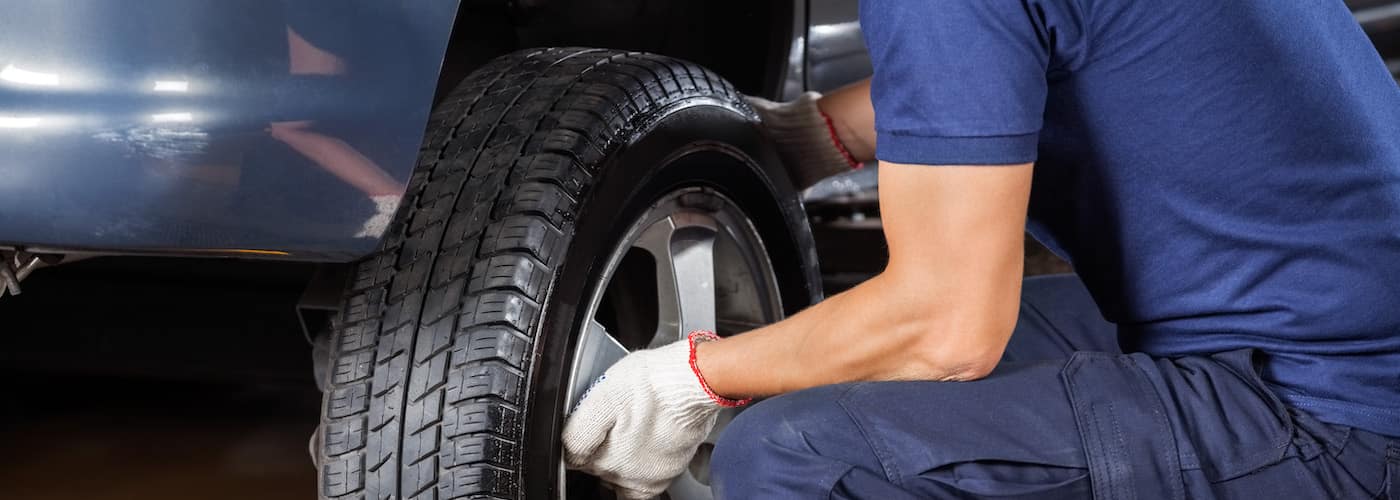
Follow the standard tire rotation pattern that applies to your vehicle and swap out the tires, placing them on the wheel mounts.
Once the tires are in their new positions, tighten the nuts evenly by going in a star or criss-cross pattern. This will help to avoid any potential flexing or shifting of your tire. Once all the tires are secured, simply take care lowering the vehicle from the jack stands, and you’re all done!
Save Thousands on Car Repairs with EnduranceTaking steps to winterize your vehicle can help ensure you and your passengers stay safe throughout the frigid winter months. Having an Endurance breakdown protection plan can also help take the worry out of the winter season by protecting you and your vehicle from the cost of unexpected auto repair bills. You can also help ensure your vehicle stays running for longer with up to $3,500 in regular maintenance coverage included as standard with each EnduranceAdvantage plan. That includes essential services such as tire rotations, engine diagnostic exams, alignment checks and more.
That includes essential services such as tire rotations, engine diagnostic exams, alignment checks and more.
You can even get access to several other special, one-time services, such as a battery replacement for even more coverage and savings. Additionally, Endurance customers will also receive access to 1 year of Elite Benefits with the purchase of any protection plan and a small activation fee, including perks such as 24/7 roadside assistance and up to 2 tire repairs or replacements.
To learn more about how Endurance can help you save, request a free quote or give us a call directly at (800) 253-8203. You can also find more DIY maintenance tips, answers to FAQs, and more helpful automotive articles by checking out our Learning Center.
Why should you get your tires rotated? Because it’s one of the easiest ways to extend the life of your tires and get the most miles out of them. And you only need to do it a couple of times a year.
Already know you need a tire rotation? Come visit us at one of our local stores or schedule an appointment.
Rotating the tires on your vehicle means moving them to different positions on your car or truck. This helps promote even tread wear on all four tires.
No matter how you drive, front and rear tires can wear at different rates. Tires that are mounted on the drive axle (the front two wheels on a front-wheel drive or back two on a rear-wheel drive) wear more quickly than the “free rolling” tires on the other axle.
Properly rotated tires can make for a smoother ride. It can also extend the life of your tires, saving you both time and money. By rotating your tires, you even out the wear to get the most tread life from every tire. Regular rotations are equally important, even if you have an all-wheel drive vehicle.
Regular rotations are equally important, even if you have an all-wheel drive vehicle.
A good rule of thumb is every 5,000 miles. Depending on your vehicle, driving style, and tire type, you may need to rotate your tires more or less often. If you’re not sure, stop by Les Schwab. We’ll help you come up with a rotation schedule.
Regular tire rotations can help spot uneven tire wear early. Going too long between rotations may result in a wear pattern that can’t be fixed, no matter where the tire is moved on the vehicle. These wear patterns could result in the need for new tires sooner than expected.
Here are some ways to remember your next rotation.
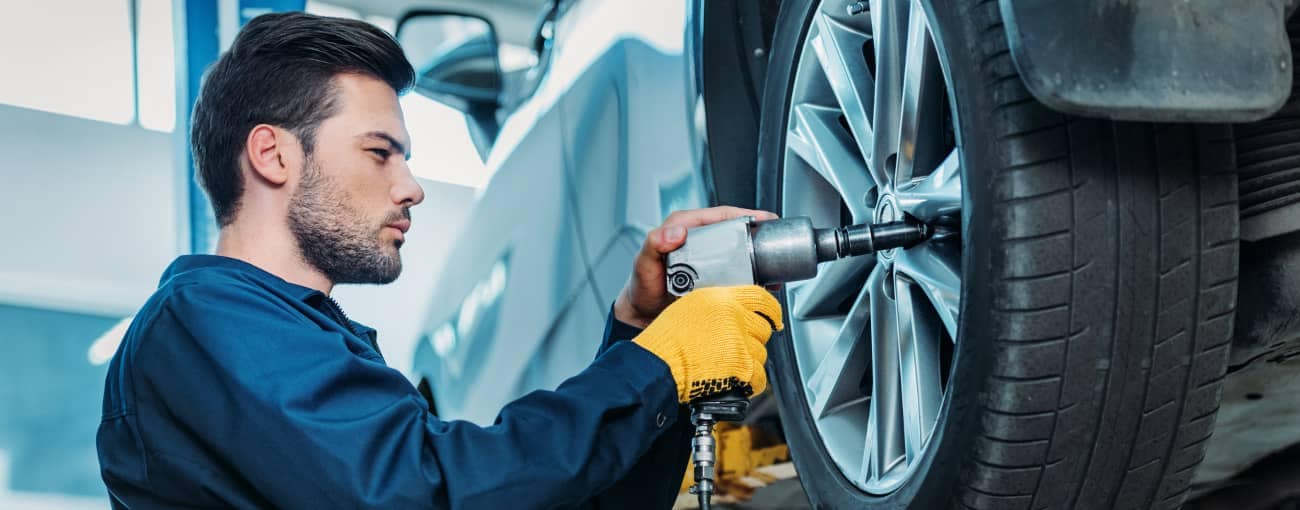
Getting your tires rotated every 5,000 miles is generally a pretty quick process. The professionals at Les Schwab will take the time to do a thorough tire rotation by also balancing your Les Schwab tires, checking your air pressure, doing a visual check of important safety systems, and documenting anything you should be aware of during the process. Once your vehicle is in our service bays, you can expect this procedure to be completed in about half an hour. Taking the time to make tire rotations a part of your normal vehicle maintenance regimen can add significant life to your tires, promote even tire wear for a smoother and more comfortable ride, and save you money in the long run.
The standard tire rotation is front-to-rear, but there are multiple patterns that could also help promote long tire life.
Here’s what Les Schwab tire pros consider to properly rotate and position the tires on your vehicle.
As always, check your owner’s manual for specific recommendations from the manufacturer.
If you have Les Schwab tires on your vehicle, rotations are free for the life of those tires. Plus we balance your wheels as part of the service. Don’t have Les Schwab tires? Our pros can still help maximize the life of your tires. Stop by your local Les Schwab for a quick estimate.
Don’t put tire rotations off. This simple task can maximize the life of your tires. When you buy tires from Les Schwab, we rotate them for free on most vehicles. Plus, we provide free rotation reminders by email.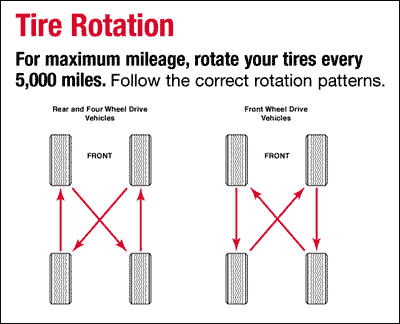 Just ask at your local store.
Just ask at your local store.
Related materials
7 rubber signals: what the tire says about car problems
How do you know when tires are completely worn out and it's time to change them? Everything is simple. For summer tires, the limit is 1.6 mm of residual tread depth, and for winter (or all-season tires used in winter) - 4 mm. Modern summer tires can travel from 40,000 to 70,000 km, depending on driving style and vehicle characteristics. An average motorist rolls such a mileage on summer tires in 2-3 seasons. Moreover, wear implies not only a decrease in tread depth. For millions of cycles of deformation, the strength of the carcass and its adhesion to the layers of the rubber compound are violated. In short, every 2-3 years you should buy a new set of tires.
In case of irreparable damage to one of the tires and a relatively high total mileage of the kit, it is also worth considering replacing it. Well, or about buying at least a pair of new tires, which, for any type of drive, should be installed on the front axle. We put two tires back - the most decent of the remaining ones.
Well, or about buying at least a pair of new tires, which, for any type of drive, should be installed on the front axle. We put two tires back - the most decent of the remaining ones.
Many motorists drive only a few thousand kilometers a year. This does not mean that the tires will serve you for several decades. According to Russian requirements (GOST 4754-97), the service life of passenger car tires is 5 years from the date of manufacture. And for example, Continental recommends that all car tires (including the spare tire) older than 10 years old should be replaced with new ones. Therefore, with small runs, you can navigate for ten years. The date of manufacture of the tire is indicated on the sidewall. Usually it is an oval with four numbers. The first two are the ordinal number of the week in the year, the last two indicate the year.
Related materials
How to change the car yourself - detailed instructions
Tires should be rotated periodically in accordance with the vehicle manufacturer's recommendations - information on this can be found in the owner's manual.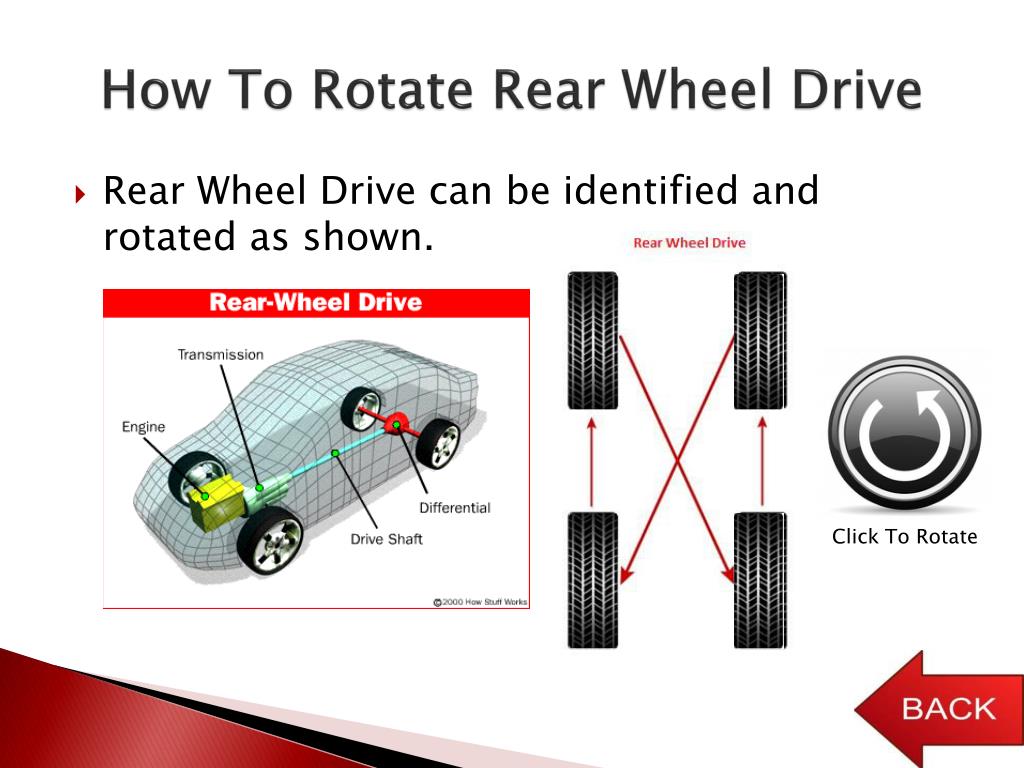
We can advise you to carefully use the tires and, most importantly, to store them correctly in the off-season. First of all, during storage, it is important to exclude direct sunlight from hitting the tires, which greatly age the rubber. Tires without rims should be placed vertically, and stacked on rims.
And before installing tires on a car at the beginning of the season, evaluate their condition. There should be no cracks in the tread and sidewalls. The tire should not be dry, it should remain rubbery and not look like baked plastic.
Related materials
Driving on badly worn tires - will I be fined or not?
Winter tires have a much shorter life span. They almost always fail due to the wear of the treadmill, because the tread of a new tire is 7–8 mm, and only 3–4 mm remain working height. If the tires are studded, then with such wear there are very few metal elements left, and the tire will not provide adequate safety when driving on a winter road.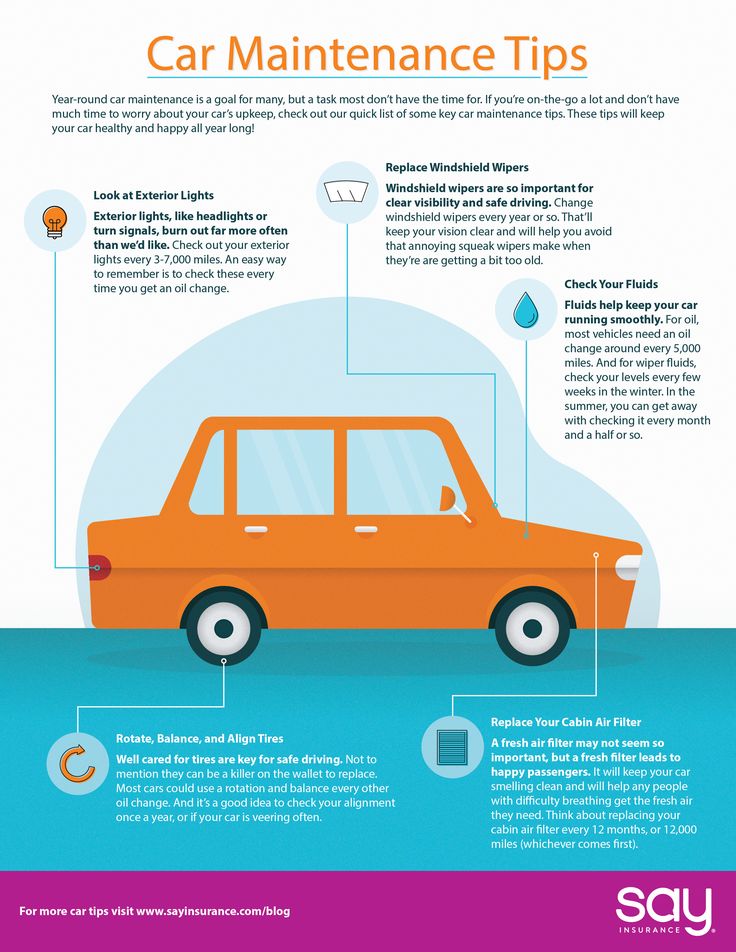 However, not only spikes, but also Velcro, with such a degree of wear, also lose most of their capabilities.
However, not only spikes, but also Velcro, with such a degree of wear, also lose most of their capabilities.
The real life of winter tires rarely exceeds 30,000 km. "Bald" winter tires without studs can be re-rolled in summer, but their grip on hot road surfaces will be very poor. This must be taken into account, especially when braking.
***
So: tires that have not yet worn out along the tread (that is, up to 1.6 mm tread depth for summer tires, 4 mm for winter tires) are changed either ten years after the date of issue, or when the rubber layer cracks tires or damage.
Our new video
When will the Russian electric truck EVM Pro appear? Details are known
Test of the most modern in the history of the Volga GAZ-3111
Anti-crisis UAZ Patriot: the pros and cons of "simplified"
Like the article? Subscribe and you will always be in the know!
Driving in Zen
News smi2.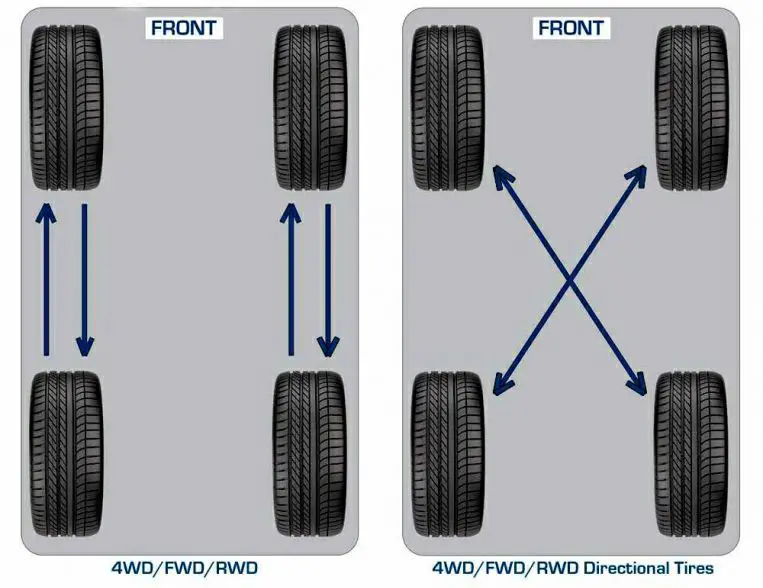 ru
ru
Driving comfort, handling and safety level depend on the technical condition of tires. Car tires provide traction to the car in various climatic and road conditions. blog.ship-ship.ru
Driving comfort, handling and safety level depend on the technical condition of tires. Car tires provide traction to the car in various climatic and road conditions.
The tread is the outer layer of the tire. It comes into contact with the road, creates a contact patch and provides traction. The tread pattern differs in volume, consists of blocks, grooves, lamellas of a certain depth.
The tread is responsible for the grip of the wheels on dry, wet, snowy and icy roads. It removes water, dirt and snow from the contact patch. The system of blocks and grooves prevents the effect of hydroplaning, when a water cushion forms between the wheel and the road during rain.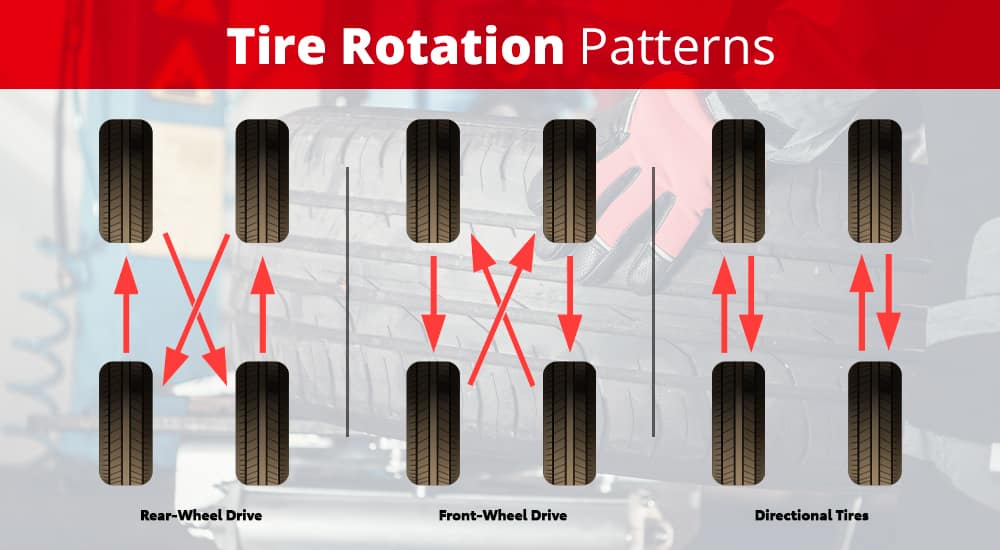
The degree of wear of the tire tread affects the handling, maneuverability, stability of the car, and the length of the braking distance. There are requirements for the depth of the tread pattern. If the outer layer of the tire is worn out, then it is changed.
It is important to understand that worn tires are not able to cope with the tasks:
Tread wear is the main cause of deterioration in braking quality, poor handling and directional stability. At the same time, worn tires show equally unstable behavior on any type of road surface in rain, snow or dry weather.
Winter and summer tires differ in thickness, composition of the rubber compound, the number, shape and size of blocks and grooves. The selection of tires depends on the make and model of the car, body type and class, climatic and road conditions (city, highway, country roads, off-road), speed limit and driving style.
The selection of tires depends on the make and model of the car, body type and class, climatic and road conditions (city, highway, country roads, off-road), speed limit and driving style.
The new tires have deep grooves and numerous sipes that provide excellent traction. Manufacturers produce winter tires with three types of tread:
Spikes are used for driving on roads and ice that have not been cleared of snow. The spikes bite into the ice crust and split it, providing excellent traction. But when driving on dry asphalt, the spike loses its working properties.
Velcro friction tires are suitable for driving on a dry clean road, melted and shallow snow, mud. The main difference between Velcro is the presence of lugs, special grip edges that increase the stability of the wheels on wet road surfaces.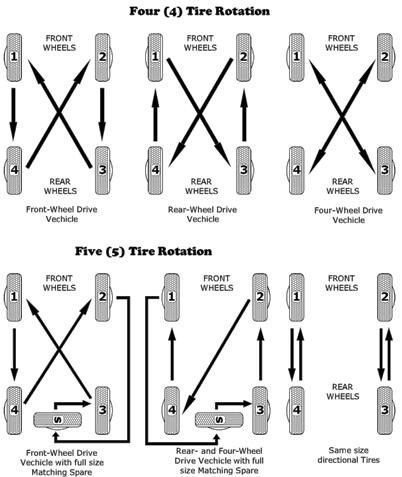
Scandinavian tires are used in the conditions of the northern regions, which are characterized by extreme sub-zero temperatures and snowfalls. The main difference between the Scandinavian tread is wide sipes, massive numerous blocks cut by grooves.
In modern tire models, the tread height is 9-12 mm. The permissible wear level here will be from 4 to 6 mm. If the wear 'threshold' passes, the tire is changed regardless of how long it lasts.
Important: The tread of a winter tire is always 3-4 mm higher than the summer model. The depth of the Scandinavian tire pattern should also be sufficient - at least 8-9 mm.
The need for replacement will also be indicated by special indicators located at the base of the tire.
The tread depth of summer tires is 6-8 mm. The minimum tread wear must be at least 1.6 mm.
The tread pattern must be clearly legible. Otherwise, the traction and grip properties of the wheels deteriorate, the tires cannot effectively remove water and dirt from the contact patch, and the effect of aquaplaning is possible.![]()
For sports cars, the tread height is 12 mm. For SUVs, the height indicator increases by another 5 mm.
According to the rules of the road, the maximum allowable tread wear is:
The residual wear of the tread for minibuses and buses designed to carry more than 8 passengers is 2 mm.
In order not to get into an emergency on the road, the car owner should periodically check the wear of the tread pattern. This can be done in the following ways:
Take a measuring tool with a depth gauge - a caliper. Pull out the depth gauge, rest its nose against the base of the drawing. The caliper should rest against the top of the rubber.
You will see readings on a mechanical or electronic scale. If the value for summer tires is less than 1.6 mm, such tires need to be replaced urgently. For winter, this figure will be below 4 mm.
To make the reading as accurate as possible, measurements are taken from the base of the figure. It should be smooth, without protrusions.
Take a coin with a face value of two rubles. Put it in the groove. If the ‘meter’ deepened to the word ‘ruble’, the residual depth is 4 mm. If the word 'ruble' has disappeared - the depth is 6 mm. But if the protector hid only the beginning of the 'wreath', then 2 mm of the pattern remained. In this case, play it safe and replace the tires.
The ‘coin’ method is inaccurate and allows you to find out the approximate depth. It is used before passing the inspection or when buying tires with mileage.
Manufacturers today offer tires with special wear indicators.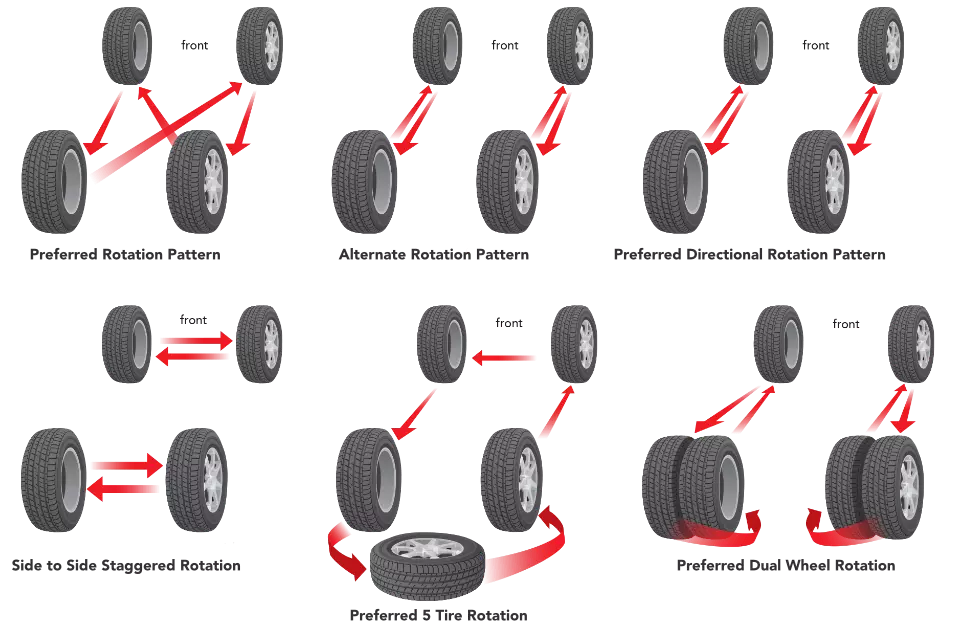 This is a special part of the drawing: it differs in color, shape, size.
This is a special part of the drawing: it differs in color, shape, size.
On the surface of tires you can find the following indicators:
Tires don't always wear evenly. Car owners often face such a problem, and here are its main reasons:
When inflating wheels, follow the manufacturer's recommendations.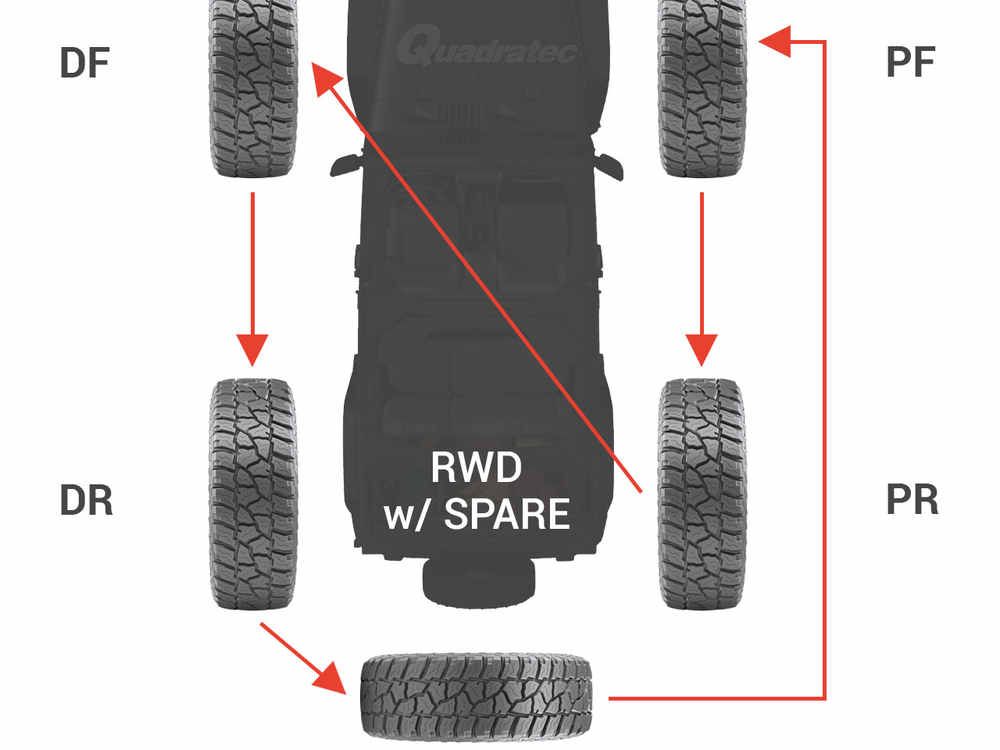 Neglect of this rule will lead to excessive pressure in the tires.
Neglect of this rule will lead to excessive pressure in the tires.
Increased pressure increases noise, increases damage, reduces handling.
If the wheels are poorly inflated, there is a deflection in the central part. Decreased acceleration, increased fuel consumption, increased turning radius.
Under normal pressure, the rubber wears evenly.
When a wheel hits a hole, the wheel alignment is knocked off the pothole. Car owners are not always able to determine this malfunction on their own and in a timely manner. The indicator is - different wear of the tread.
Excessive camber angle (positive or negative) leads to abrasion of the rubber in the shoulder areas. The cover is bevelled. A car with such wheels cannot move in a straight line, and the driver has to constantly tighten the steering rack.
Excessive toe angle (positive or negative) results in a 'knocked down' tread. The drawing is assembled into an accordion, forming a bumpy, rib-like surface.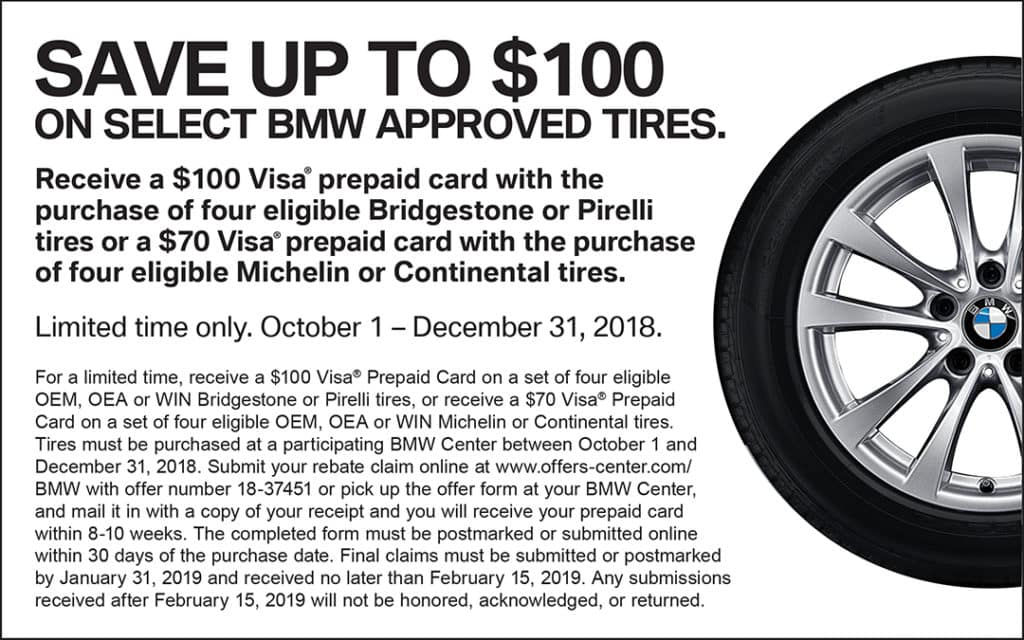
Due to defects in tires or rims, it is impossible to properly balance the wheels. Such a ‘malfunction’ leads to uneven wear, poor handling and vehicle stability.
The first sign of defective rubber is the appearance of shocks, the beating of the steering column.
Suspension condition should be checked annually. Worn parts or failure of this part of the undercarriage of the machine will also lead to uneven tire wear.
Tires with residual wear of the tread pattern, rubber with cracks and cuts are subject to replacement.
It is important to remember that tires are subject not only to abrasive wear, but also lose their performance under the influence of climatic conditions, exposure to road dust, reagents, and high loads. The result of such influences is a hardened tire covered with microcracks.
Therefore, tires need to be changed every five years.